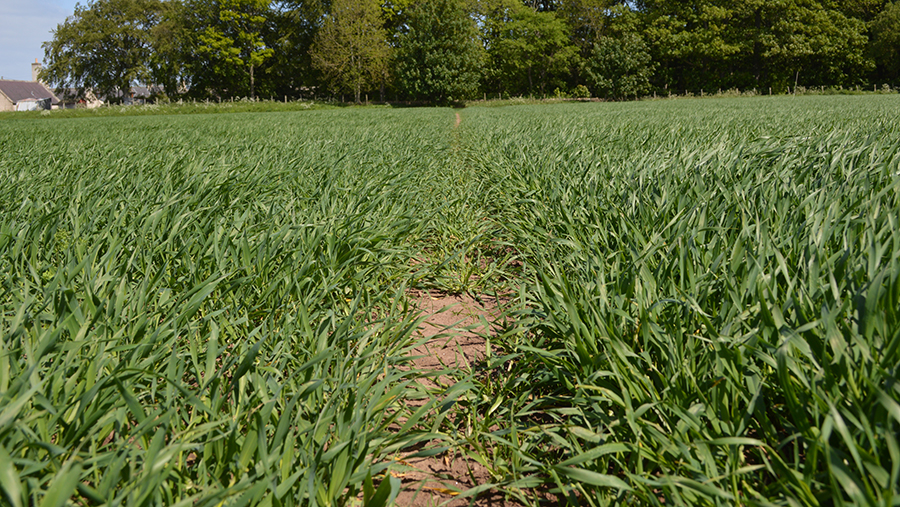What English spring barley growers can learn from the Scots

English spring barley growers could take a leaf out of their Scottish neighbour’s agronomy manuals and focus on crop nutrition, and micronutrients in particular, to see yields climb above 10t/ha.
With the area of spring barley set to jump after a very wet autumn and winter, new growers could do well to concentrate on micronutrients as they may also help disease control as well as yields.
The Early Bird survey from the AHDB last month forecast that the UK spring barley area is set to rise 47% to just over 1m hectares as the area of autumn-sown wheat, barley and oilseed rape have all fallen.
See also: How Berks wheat grower increased his yields by 20%
Three-spray programme
Alistair Gordon, regional technical manager at agronomy group ProCam, says three applications of micronutrients through the spring can be worthwhile, especially with high post-harvest malting barley prices.
“Be kind to your spring barley and it will pay you back with malting prices at over £180/t post harvest,” he tells Farmers Weekly.
Mr Gordon advises growers over an area of north-eastern Scotland from Easter Ross, through the Black Isle and into Morayshire consisting of generally light land where getting crop nutrition right early is often key in dry springs.
Early Bird survey in thousands of hectares (February 2020) |
|
| Spring barley | 1,042, up 47% |
| Wheat | 1,504, down 17% |
| Winter barley | 347, down 23% |
| Oilseed rape | 361, down 32% |
One grower in his region achieved a spring barley farm average of 8.75t/ha using micronutrients and some had fields yielding over 10t/ha, with the malting variety Laureate being the most popular in the area.
Adding key micronutrients, such as copper, manganese and zinc, in three doses along with fungicide sprays may only cost an extra £10-15/ha, and could well be worthwhile with high malting barley prices, he adds.
Dry springs
Many English barley growers often apply micronutrients only at the T1 and T2 stages, but an early T0 in Scotland is often critical in dry springs.
“Spring barley grows so fast that if we leave applications too late on lighter soils we will see signs of micronutrient deficiencies,” says Mr Gordon.
This season’s heavy rains throughout the autumn and winter will have leached out micronutrients, so soils levels will be low, and tissue testing will give growers a good idea of levels in crops.
His first suggested application comes at the T0, or the three leaf to first tiller stage, where often an early fungicide in north-east Scotland is used to keep disease out of the crop. This would include copper, manganese and zinc.
The second application at the T1, or the end of tillering, will see manganese, copper and possibly zinc needed. Copper and zinc are seen as particularly important for crop fertility.
At the flag leaf T2, or paint brush stage, Mr Gordon suggests adding magnesium, possibly sulphur, and sometimes potash.
Ramularia threat
The micronutrient approach links into disease control strategy, and is particularly relevant in Scotland with ramularia disease being an increasing threat with the banning of chlorothalonil, a key fungicide for its control.
The banning of chlorothalonil on farm from May 20 means it will not be able to be used at the T1 and T2 stage on spring barley in Scotland.
Mr Gordon suggests the early T0 spray is likely to be based around the azole prothioconazole to keep disease out of crops early, such as rhynchosporium and net blotch, and also mildew which can be a problem on the variety Propino.
The T1 and T2 sprays are likely to be prothioconazole-based with either a strobilurin or SDHI added depending on the disease pressure.
In addition, he suggests biostimulants, such as seaweed extract, can be useful to encourage rooting and help overcome the stress of drought when applied at the T0 stage.

